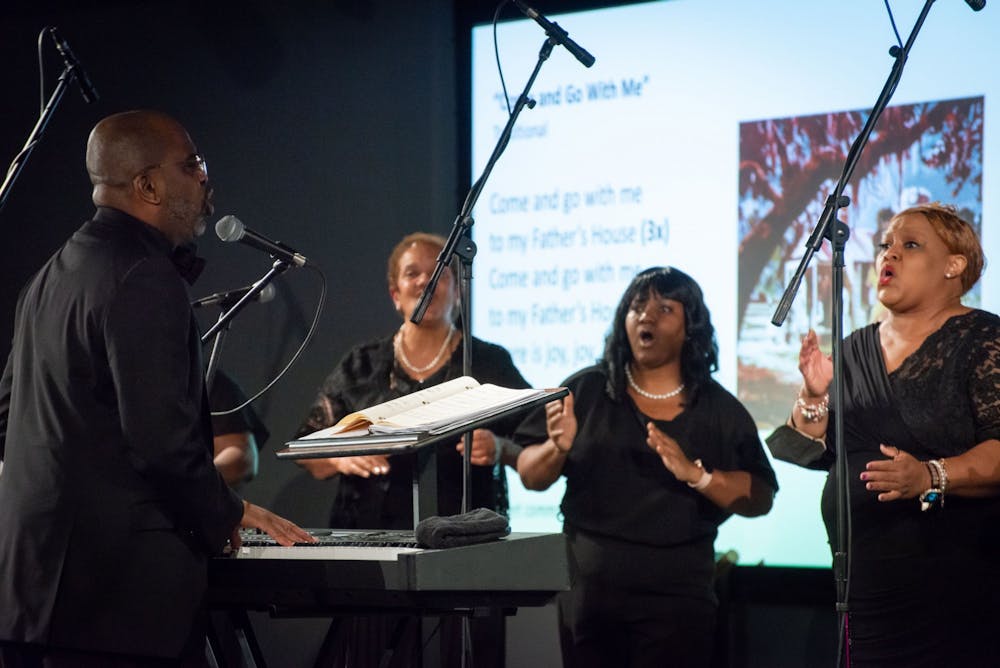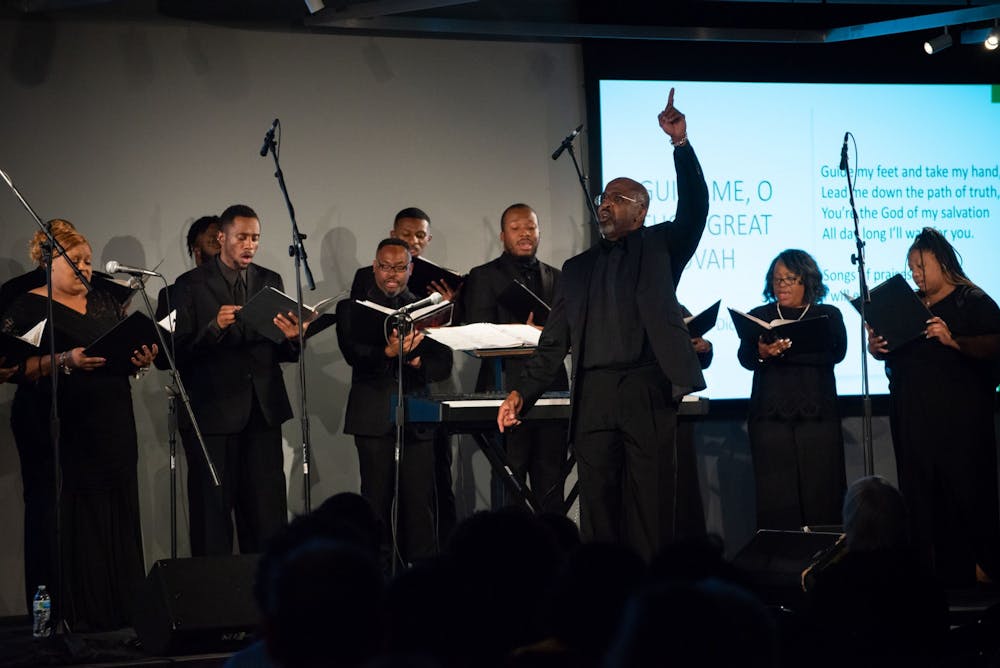The rhythm of Black music pulsates through the second floor of the Columbia Museum of Art, where the flow of communal conversation and drums pulsate the air.
This month, The Columbia Museum of Art is continuing its series, "More Than Rhythm: A Black Music Series with a month-long celebration of soul music".
One of the series’ celebration performances was the Mahoganëë Xperience, a Gullah-Geeche artist of South Carolina, who describes her music as “indigenous soul music.”
“The type of music I do is not very commercial, so an opportunity like this was extremely important for me. I actually had it on my vision board,” Mahoganëë Amiger of the Mahoganëë Xperience said.
The event was designed by event stylist Renee Givens to emulate Gullah-Geeche culture, bringing to the stage elements of water, rice, land and quilts so the audience could experience where the music came from, Mahoganëë said.

The night began with a conversation and Q&A section conducted by the series host, Brigitta Johnson, Ph.D, followed by the musical performance of the Mahoganëë Xperience, to a room where every seat was filled and riveted by original songs and a piercing cover of a Nina Simone song.
More Than Rhythm: A Black Music Series is a two-year celebration of Black music, hosted by Johnson and organized by the Columbia Museum of Art. The series is sponsored by The Baker & Baker Foundation and the Central Carolina Community Foundation.
The series includes conversations with featured artists, a Q&A for people in the audience to ask questions, followed by a musical performance. The series also holds film screenings, DJ listening parties and workshops.
Series host, Johnson, is an ethnomusicologist, which is someone who studies music, culture and music roles in society. Johnson is a professor in the School of Music and African-American studies program at the University of South Carolina.
Part of the series title, "More Than Rhythm," comes from an attitude, Johnson said.
“When people were studying African American music in the earliest writings, it talked about Africans who were becoming African American or Afro American. They were talking about how the music that black people were producing was very rhythmic…it always had almost like a negative stereotype,” Johnson said.
Johnson said there was the assumption that besides rhythm, there was nothing much left to Black music.
“African-Americans have been constantly proving that as a false false myth. And so, we basically named the series more the rhythm to really… kind of poke at that old school myth, but also the fact that there's so much diversity in African-American music contributions,” Johnson said.
Johnson said the interconnectivity of music and the African-American community is tied to everything within the Black community.
“Music tells the story of African-Americans probably more thoroughly than anything else. Because before African Americans were even allowed to write legally in some parts of this country, they were making music,” Johnson said. “And so by large, the experiences of black people have often been sung and performed.”
The series' development began in 2021, when Wilson Bame, engagement director of the Columbia Museum of Art, asked Johnson to be part of the series. The series officially kicked off in February of 2022 after the emergence of the Omicron Variant delayed original plans.
“We want to have programs at the CMA that include artists and highlight artists that are a reflection of our community. And this is one that is a reflection of the African-American and Black communities in Columbia… our goal is to be a reflection of the people that make up our community,” Bame said.
Johnson said it has been an easy collaboration between herself and the Columbia Museum of Art.

“When I make suggestions, they're like, 'Great, let's do it.' So, we don't have to fight about representation. They trust my expertise as an Ethnomusicologist. And they have a wonderful team of staff who make things happen to pull things together,” Johnson said.
Bame said one of his favorite parts of working on the series is seeing the audience's engagement with the conversations and performances surrounding the music.
“I think at every single concert the audience has sung back, or sung with the artists at some point, and that's been really amazing,” Bame said.
Johnson’s favorite part of the series has been the community who has supported the project.
“We can get into the community who actually supports this music and want to support music like this,” Johnson said. “We also get to hear what inspires people… they can talk about how they feel about the world around them, because most of the music is talking about the world around us.”
Upcoming events for “More than Rhythm: A Black Music Series” can be found on the Columbia Museum of Art’s website.



